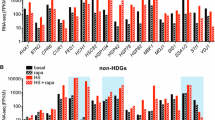Abstract
Elevated temperatures cause proteins in living cells to misfold. They start forming larger and larger aggregates that can eventually lead to the cell’s death. The heat shock response is an evolutionary well conserved cellular response to massive protein misfolding and it is driven by the need to keep the level of misfolded proteins under control. We consider in this paper a recently proposed new molecular model for the heat shock response in eukaryotes, consisting of a temperature-induced activation mechanism, chaperoning of misfolded proteins and self-regulation of the chaperon synthesis. We take in this paper a control driven approach to studying this regulatory network. We modularize the network by identifying its main functional modules. We distinguish three main feedback loops. The main question we are addressing is why is this level of complexity needed for implementing what could in principle also be achieved with an open-loop design. We answer the question by comparing the numerical behavior of various knockdown mutants where one or more feedback loops are missing. We also discuss a new approach for a biologically-unbiased model comparison.
Preview
Unable to display preview. Download preview PDF.
Similar content being viewed by others
References
Alves, R., Savageau, M.A.: Extending the method of mathematically controlled comparison to include numerical comparisons. Bioinformatics 16, 786–798 (2000)
Chen, W.W., Schoeberl, B., Jasper, P.J., Niepel, M., Nielsen, U.B., Lauffenburger, D.A., Sorger, P.K.: Input output behavior of ErbB signaling pathways as revealed by a mass action model trained against dynamic data. Molecular Systems Biology 5, 239
Csete, M.E., Doyle, J.C.: Reverse Engineering of Biological Complexity. Science 295, 1664–1669 (2002)
Guldberg, C.M., Waage, P.: Studies Concerning Affinity. C. M. Forhandlinger: Videnskabs-Selskabet i Christiana 35 (1864)
Guldberg, C.M., Waage, P.: Concerning Chemical Affinity. Erdmann’s Journal für Practische Chemie 127, 69–114 (1879)
Hawkins, B.A., Cornell, H.V. (eds.): Theoretical Approaches to Biological Control. Cambridge University Press, Cambridge (1999)
Kitano, H.: Systems biology: A brief overview. Science 295, 1662–1664 (2002)
Holmberg, C.I., Tran, S.E., Eriksson, J.E., Sistonen, L.: Multisite phosphorylation provides sophisticated regulation of transcription factors. Trends Biochem. Sci. 27(12), 619–627 (2002)
Kline, M.P., Morimoto, R.I.: Repression of the heat shock factor 1 transcriptional activation domain is modulated by constitutive phosphorylation. Molecular and Cellular Biology 17(4), 2107–2115 (1997)
Lazebnik, Y.: Can a biologist fix a radio? - or what I learned while studying apoptosis. Cancer Cell 2, 179–182 (2002)
Petre, I., Mizera, A., Hyder, C.L., Mikhailov, A., Eriksson, J.E., Sistonen, L., Back, R.-J.: A new mathematical model for the heat shock response. In: Kok, J. (ed.) Algorithmic bioprocesses. Natural Computing. Springer, Heidelberg (2008)
Petre, I., Hyder, C.L., Mizera, A., Mikhailov, A., Eriksson, J.E., Sistonen, L., Back, R.-J.: A simple mathematical model for the eukaryotic heat shock response (submitted, 2009)
El Samad, H., Kurata, H., Doyle, J.C., Gross, C.A., Khammash, M.: Surviving heat shock: Control strategies for robustness and performance. Proc. Natl. Acad. Sci. 102(8), 2736–2741 (2005)
Sontag, E.: Some new directions in control theory inspired by systems biology. IEEE Systems Biology 1(1), 9–18 (2004)
Sontag, E.: Molecular systems biology and control. European Journal of Control 11, 396–435 (2005)
Stelling, J., Sauer, U., Szallasi, Z., Doyle, F.J., Doyle, J.: Robustness of cellular functions. Cell 118(6), 675–685 (2004)
Wolkenhauer, O.: Systems biology: the reincarnation of systems theory applied in biology? Brief Bioinform 2(3), 258–270 (2001)
Author information
Authors and Affiliations
Editor information
Editors and Affiliations
Rights and permissions
Copyright information
© 2009 Springer-Verlag Berlin Heidelberg
About this paper
Cite this paper
Czeizler, E., Czeizler, E., Back, RJ., Petre, I. (2009). Control Strategies for the Regulation of the Eukaryotic Heat Shock Response. In: Degano, P., Gorrieri, R. (eds) Computational Methods in Systems Biology. CMSB 2009. Lecture Notes in Computer Science(), vol 5688. Springer, Berlin, Heidelberg. https://doi.org/10.1007/978-3-642-03845-7_8
Download citation
DOI: https://doi.org/10.1007/978-3-642-03845-7_8
Publisher Name: Springer, Berlin, Heidelberg
Print ISBN: 978-3-642-03844-0
Online ISBN: 978-3-642-03845-7
eBook Packages: Computer ScienceComputer Science (R0)




